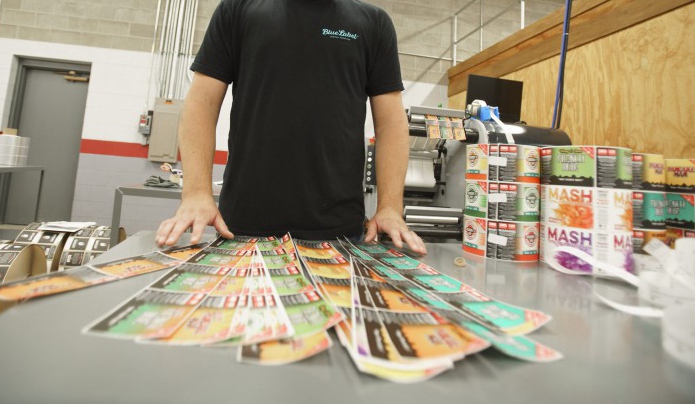
The Smithers Institute, an international authority, recently released a research report titled "The Future of Label Printing by 2029", predicting the development trend of the global label printing market in the next five years.
The report shows that the global label printing market will grow strongly in the next five years, and by 2029, the market size will grow to $54.1 billion.
The Asia-Pacific Region Has Great Growth Potential
The report shows that the global label printing market is expected to reach $44.8 billion in 2024 and continue to grow at a strong momentum. From 2024 to 2029, the global label printing market size will grow at a compound annual growth rate of 3.8%.
In terms of growth volume, the global label printing volume will achieve a substantial increase in the next five years. The report predicts that from 2024 to 2029, the global label printing volume will jump from 1.34 trillion A4 sheets to 1.66 trillion A4 sheets, with a compound annual growth rate of 4.4%.
From the perspective of growth regions, North America will account for the largest market share in the global label printing market in 2024. In terms of market growth rate, the label printing market in the Asia-Pacific region has great potential from 2024 to 2029, with China and India dominating. The Asia-Pacific region is the most populous region in the world, and the demand for packaging and fast, high-quality label solutions in the food and beverage industry is growing. At the same time, the growth of industrial and manufacturing industries is expected to drive the growth of the label printing market in China and India.
Digital Labels Are Recognized by the Market
The report shows that in the next few years, the application prospects of digital printing technology in the label field are optimistic, and its application speed in the label market will exceed that of traditional printing.
Compared with traditional label printing equipment, digital label printing equipment can produce small batches of products, and the label content can be customized according to needs, which makes the application ratio of digital printing technology in the global label printing market in 2024 increase significantly, which is expected to reach 21.6%. Traditional printing equipment manufacturers are trying to improve processes by increasing the degree of automation, including speeding up work setup and plate change, and increasing the use of fixed color palettes.
Although digital label printing equipment has a relatively slow printing speed compared to flexographic printing and is more suitable for long-run printing, it may hinder the growth of the digital printing label market to a certain extent. However, its streamlined workflow and work management have made it increasingly competitive and favored by many label printing companies. At the same time, with the emergence of more and more hybrid printing equipment that pairs digital printing engines with online post-press processing units, the versatility of label printing service providers has increased. With this evolution, inkjet printing will replace toner printing as the preferred digital printing method for labels.
Beverages and Food Industries Occupy A Large Share
The report shows that beverages and food will become the two areas with the highest market share in label printing. The beverage and food sectors are mainly consumer-oriented, and their labels provide consumers with product identification, ingredient information, etc. Especially in high-value brands, labels are often used to enhance the attractiveness of products and influence consumer perception. In 2024, the market share of these two major areas is expected to account for 64.9% of the global label printing market share.
The market share of the pharmaceutical and healthcare industries ranks behind the two segments of beverages and food. The pharmaceutical industry faces increasingly severe challenges from counterfeit products. For medical devices and pharmaceutical packaging, labels carrying unique product identifiers and two-dimensional data matrix codes can achieve supply chain traceability and prevent counterfeiting.
Among the five types of labels discussed in the report, the fastest growing are pressure-sensitive labels and sleeve labels, while wet glue labels and in-film labels are growing relatively slowly. Among them, the rapid growth of pressure-sensitive labels and sleeve labels mainly benefits from the market's demand for packaging sustainability, preferring to use lighter polymer raw materials, and technologies that are easier to separate from the substrate during recycling.
At the same time, the label printing market is also actively applying more advanced artificial intelligence software and improving operational efficiency by enhancing the quality control and detection functions of label printing machine.
Please bookmark the website of Hongsam Digital for more industy news.
 Oct 18,2024
Oct 18,2024
